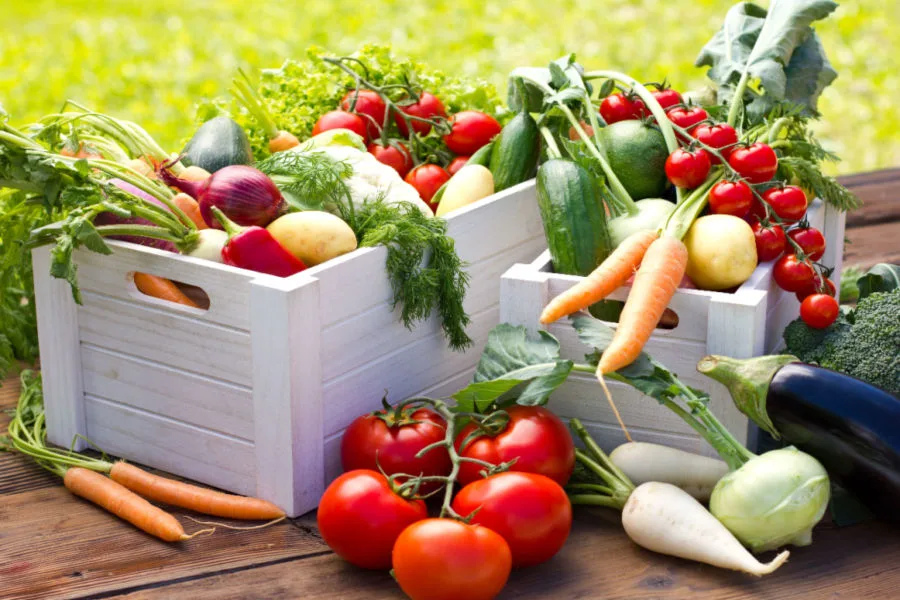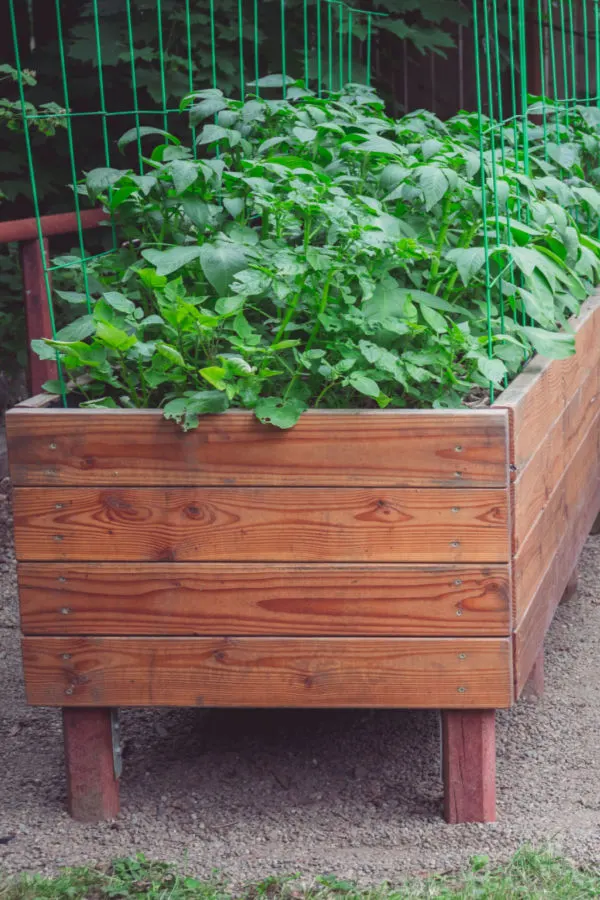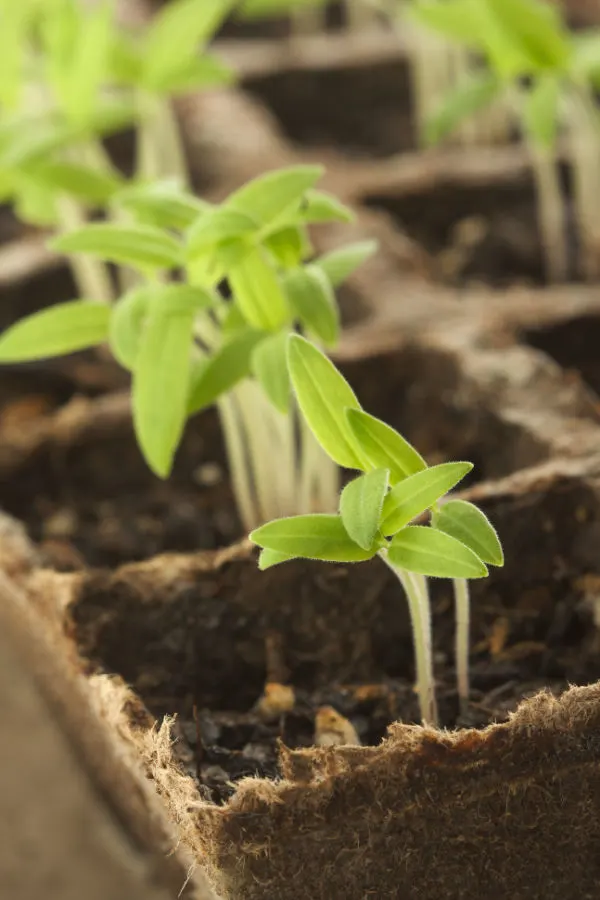One of the best ways to help offset the ever rising price of groceries is to grow some or all of your own with a great backyard garden – and the best way to do that successfully is by starting to plan now!
Whether you are a first time grower or a seasoned gardener, a productive garden all starts with a great garden plan. And wintertime is the perfect time to create the layout so you can hit the ground running next spring.
In the winter, not only is the garden at rest, but so is the gardener! And without all of those planting, weeding and harvesting chores, there is plenty of time to figure out exactly what you want to grow, and when and where to plant it.

Even more, you can take the time to really make the most of your space – setting the stage to grow what you and your family need and like the most. After all, if you really want to save money on groceries, growing what you need and love to eat is a must!
The simple truth is that whether you have a large growing space, room for a few raised beds, or even a small patio space to allow for a few pots and containers, with a little planning now, you can be ready next spring to eliminate at least a few trips to the grocery for fresh fruit and vegetables. And with today’s prices – even buying a few less vegetables can mean big savings!
How To Plan Your Garden Space And Grow Your Groceries
Write Your Plan Down
One of the biggest keys to success to having a productive garden season is committing a plan to paper. Whether listed on a sheet of notebook paper, on your laptop, or even on your phone, without a plan in place, it’s easy to get off track.
Having a plan in writing will guide you from start to finish. It eliminates all kinds of future problems. Like forgetting when to start seeds. Or when and where to plant certain vegetables. Most importantly, it can help to eliminate the mistake of planting too much or too little of a certain vegetable.

Every good plan should start with a list of what you want to grow. Focus the list on vegetables you and your family love to eat most. That way, planting spaces are geared towards what you will use the most.
It sounds so simple, but without a grow list, your garden space can end up growing vegetables that you happened to find at a store – and that you or your family don’t really even like! Stick to what you love to eat, and you will love your garden more than you ever thought possible.
Sketch Out Your Garden Space – How To Grow Your Groceries
Once you make a list of the plants you love and want to grow, take a few minutes to sketch out where they will go in your available growing spaces. This step is so important, and is another key step gardeners often forget to take.
This reduces the chance of running out of planting room in the spring. Or even worse, leaving areas bare because you didn’t realize you had more room. If you are stumped on how much space to leave for plants, nearly all seed companies now list spacing requirements on line. It makes it easy to know exactly what you can fit where.
If you grew a garden last year, also be sure to select new locations for plants from last year’s garden space.
The practice of rotating vegetables into a new growing space each year in the garden has several benefits. For one, it helps keep disease at bay. Plants that grow in the same location year after year make it easier for pests and disease to attack them. Once again, planning in advance can help you grow better.
Listen in to our podcast on garden planting secrets below!
Rotating crops also allows vegetable plants to find the nutrients they need to grow strong. Vegetables that grow in the same space year after year use up the minerals they need most. This is especially true for crops such as tomatoes that take a lot of nutrients from the soil. (See: How To Plant Tomatoes Right! 6 Simple Secrets To Grow Your Best Crop Of Tomatoes Ever)
Create A Timeline Calendar – How To Grow Your Groceries
Now that the plan is committed to paper, it’s time to create a timeline for garden action. Having a timeline in place helps you keep everything in the garden on schedule. This step is so crucial for getting the most out of your garden all year long!
The last thing you want is to start your plants too late, too early – or not at all! If starting your plants from seed, jot down the dates that they need to be planted. Some vegetables, like tomatoes & peppers require a bit more time to get to maturity. Others, like sweet corn and beans can go in later directly in the ground.
By knowing what gets planted when, you won’t miss out. Write down all of your planting dates in order to prepare in advance. If an early crop of peas or lettuce is in your plan, put down a date or a date range they need to go in the ground. If not, it can pass by quickly and you miss your chance.

Be sure to do this for your entire garden year, including second planting dates in mid-summer. And last – put that execution list somewhere where you will see it every day. It is amazing how a simple calendar can keep you and your garden on track!
Order Seeds & Supplies Early – How To Grow Your Groceries
Finally, don’t wait until it’s too late to get have your supplies on hand. Whether it is seed starting soil, seedling trays, or the seeds themselves, having what you need, when you need it is crucial in keeping a good garden plan on track.
Many gardeners have the best of intentions of growing their plants from seed. It is, after all, one of the best ways to save big on your garden budget and grocery bills! But unfortunately, if you wait until it’s too late to order, you will be stuck having to purchase plants that might not be what you love most.
In recent years, with more and more people growing vegetable gardens, seed companies can run out of seed stock early. Once you have your plan and plant list in place, order those seeds and have them on hand. See: Eden Brothers Seed Company
The same goes for having seed starting soil mix, seed trays, and lights ready to go too. That way your seedlings will get off to the best start possible. Here is to creating your vegetable garden plan now – and being ready to grow your groceries next spring, summer and fall!
Follow Our Facebook Page For Great Gardening Tips And Advice! This Is My Garden Facebook Page
This Is My Garden is a garden website created by gardeners, for gardeners. Jim and Mary Competti have been writing gardening, DIY and recipe articles and books and speaking for over 15 years from their 46 acre Ohio farm. They publish three articles every week, 52 weeks a year. Sign up today to follow via email, or follow along!
